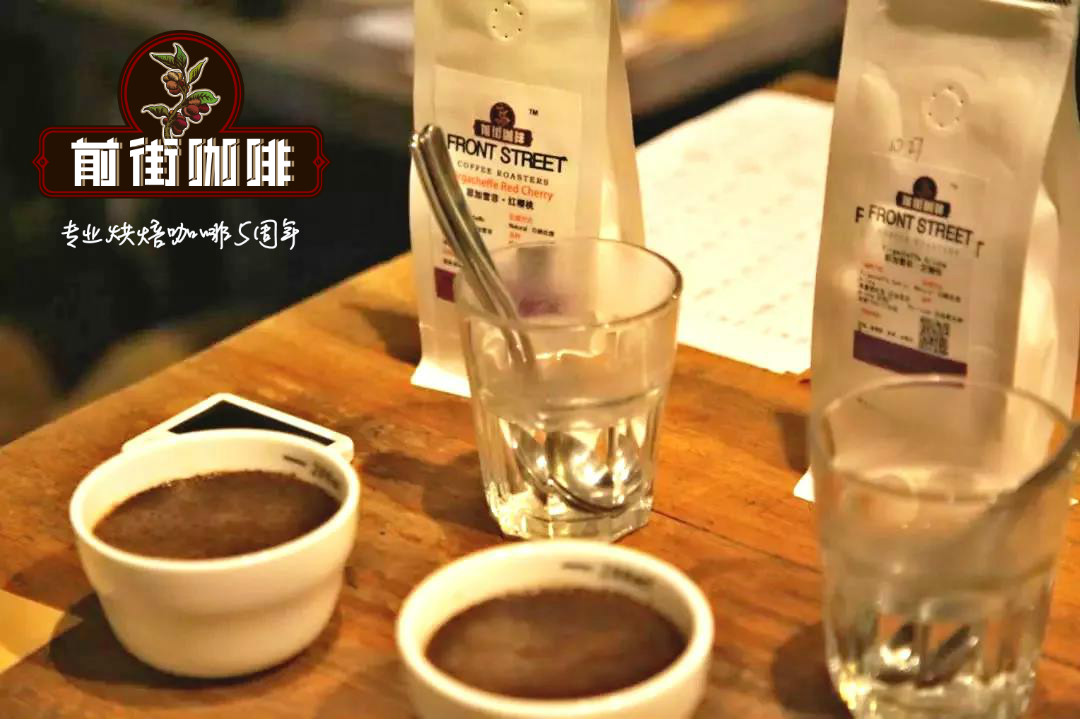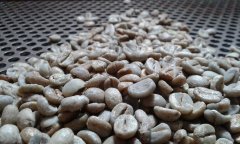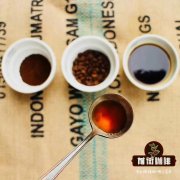The synonym of Ethiopian boutique coffee-- Aricha G1

Professional coffee knowledge exchange more coffee bean information please follow the coffee workshop (Wechat official account cafe_style)
Ethiopia Yega Xuefei Aricha Solar
Processing plant: Korbel Arijia processing plant (Kebel Aricha)
Operator: Surafel Birhanu
Production area: Yegashefi District, Gedeo Zone area (Gaideo), about 4 km away from the town of Yegashefi
Altitude: 1950-2100 m
Coffee varieties: family lineage-Tibica, and other Ethiopian native species
Harvest season: November to February
Raw bean treatment: sun treatment
The aroma of raw beans is pineapple, tropical fruit, fresh sweet berries, delicate acidity, and dry aromas full of orange honey; wet aromas of strawberries spread hot sipping on the tip of the nose, dried plums, pineapple sweetness, slightly sour flowers; when warm drinks, fruity cocoa and some slightly green mango honey sweetly up the throat When drinking cold, the fruit acid begins to rise, the throat rhyme plays a chemical role, and the sweet taste of cocoa and fruit is mixed (light baking can retain the characteristic flavor of the sun).
Ethiopia Sun Yegashefi Erika Coffee comes from the Korbel Erika processing plant, which is run by Surafel Birhanu. In the Yega Sheffield Gaideo area, about 4 kilometers west of the town of Yegashefi, 650 to 700 coffee farmers are producing the coffee. The Gaio area is named after the local aboriginal Gaiao people. These coffee farmers send ripe coffee cherries to the Arijia processing plant, grade them, and then dry them in a thin viaduct bed. For the first few days of drying, coffee cherries must be turned every 2 to 3 hours to avoid excessive fermentation and mildew. Depending on the dry time of the weather, four to six weeks later, the coffee cherries are peeled and sent to the Ethiopian capital, Addis Ababa, where they are processed and bagged for export; the Yega is exported through the Ethiopian crop Trading system (Ethiopia Commodity Exchange,ECX) and is classified as Grade 1 sun-dried beans by ECX's Central Beverage Department (Central Liquoring Unit).
Yirga cheffe is a small town in Ethiopia, 1700-2100 meters above sea level. It is one of the highest coffee producing areas in the world and is synonymous with Ethiopian boutique coffee. Lake Turkana, Lake Abaya and Lake Chamo bring rich water vapor here. The Rift Valley, represented by Misty valley, is foggy all the year round, like spring all the year round, with a gentle breeze, cool and humid, and thousands of coffee trees thrive, giving birth to the unique and unpredictable atmosphere of Yejia Xuefei's unique fragrance of flowers and fruits.
There are many high-quality coffee processing plants in the Yegashafi region, and a lot of caffeine comes from these processing plants and becomes worth a hundred times as much. One of them is the sun Yegashefi produced by Kebel Aricha Mill, which is also what we often call ARICHA beans, which is classified by ECX as Gr.1 or G1 (the highest grade of Ethiopian coffee) by the Kebel Aricha processing plant, and is known as the "king of fruit".
Category An is the washing method, and the grade standard is set by the American Fine Coffee Society SCAA. It is divided into Gr-1;Gr-2. The smaller the Arabic numeral is, the higher the grade is. The style of G1 Yega Chuefei is distinct. The flavor of citrus and floral flavor in the coffee liquid is an irresistible delicacy for everyone.
Category B is sun-treated coffee raw beans, and the grade is Gr-1;Gr-3;Gr-4;Gr-5. Similarly, the highest grade of G1 sun Yega Chuefei is fruity. Opening the freshly roasted G1 sun Yega Chevy coffee bag can subvert people's original understanding of coffee. Only those who have tasted the highest grade sun Yega Chevy will believe that coffee is a kind of fruit.
In Sidamo province, Sidamo, Ethiopia, between 1800 and 2000 meters above sea level, the coffee produced is famous for its citrus and unique floral aroma, known as "Yejashafi".
Coffee beans are small, green and gray in color, and most of them are washed with water from ancient times to the present. But in the 2006 Gold Cooperative Coffee Competition (Gold Cooperative Coffee Competition), the top three were all wrapped in sun beans, which means it's not just the traditional ones that are the best.
Important Notice :
前街咖啡 FrontStreet Coffee has moved to new addredd:
FrontStreet Coffee Address: 315,Donghua East Road,GuangZhou
Tel:020 38364473
- Prev

COB: a complex evolutionary history of the official grading system for raw coffee beans in Brazil
For more information on coffee beans, please follow the Coffee Workshop (Wechat official account cafe_style) cob: the complex history of the official classification system in Brazil the origin of cob sensory analysis has provided an important mechanism for pricing goods around the world since the beginning of trade. Color, smell and taste are one of many attributes used to grade a wide range of food and agricultural products.
- Next

We can't drink Sprite in'82, so how about an 82-year-old Mantenin?
Professional coffee knowledge exchange more coffee bean information Please follow the coffee workshop (Wechat official account cafe_style) has heard that it does not matter if the coffee bean is kept for a long time, it will become old coffee beans and taste better. In fact, this is a rather irresponsible statement. Beans will rot after they have been kept for a long time, changing from fresh cyan to white, then to yellow, becoming dull or even dull.
Related
- Detailed explanation of Jadeite planting Land in Panamanian Jadeite Manor introduction to the grading system of Jadeite competitive bidding, Red bid, Green bid and Rose Summer
- Story of Coffee planting in Brenka region of Costa Rica Stonehenge Manor anaerobic heavy honey treatment of flavor mouth
- What's on the barrel of Blue Mountain Coffee beans?
- Can American coffee also pull flowers? How to use hot American style to pull out a good-looking pattern?
- Can you make a cold extract with coffee beans? What is the right proportion for cold-extracted coffee formula?
- Indonesian PWN Gold Mandrine Coffee Origin Features Flavor How to Chong? Mandolin coffee is American.
- A brief introduction to the flavor characteristics of Brazilian yellow bourbon coffee beans
- What is the effect of different water quality on the flavor of cold-extracted coffee? What kind of water is best for brewing coffee?
- Why do you think of Rose Summer whenever you mention Panamanian coffee?
- Introduction to the characteristics of authentic blue mountain coffee bean producing areas? What is the CIB Coffee Authority in Jamaica?

